There are a lot of misconceptions out there about Guided Math. I’ve seen many things labeled “Guided Math” that truly have me scratching my head. With so much (mis)information out there, I thought I’d take some time to help break down what Guided Math *IS* and what Guided Math *IS NOT*. Let’s dive in!
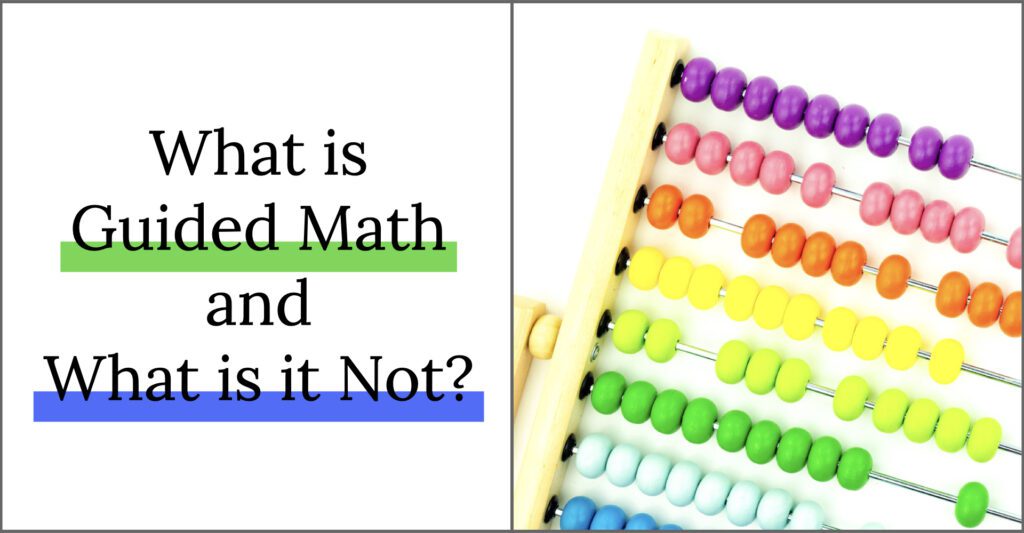
Guided Math IS NOT:
Guided Math is NOT teaching the same lesson to students in small groups.
While teaching content in small groups is important and allows you more face time with students, Guided Math is NOT teaching the same lesson multiple times to different groups.
Why not? Guided Math focuses on what Vygotsky called a student’s Zone of Proximal Development, which is individualized to each student. The model of teaching the same content to different groups doesn’t allow the teachers to meet students at their instructional level. Instead, the teacher is still “teaching to the middle,” but in a smaller group setting.
Guided Math is NOT students rotating through the same centers
Centers are a great way to give students time to practice skills independently! Especially while you are also trying to pull those small math groups. However, Guided Math is not setting up weekly centers (or something similar) where all students complete the same centers throughout the week.
Why not? Guided Math focuses on differentiating student work, and ensuring that students are working on skills at their instructional level. Just like with reading, the most meaningful gains come when students are pushed *just slightly* above their independent level. This can’t happen when we aren’t strategic about the centers we choose, and instead have everyone rotate through the same activities.
Guided Math is NOT Teaching a Mini Lesson and checking in with students individually
Providing common math experiences is awesome, so mini-lessons and Number Talks are very much a part of Guided Math. However, Guided Math is not teaching mini-lessons and then following up with individual students as they engage in independent work/centers.
Why not? The mini-lesson is a way to establish a community of mathematicians, and allow students to hear from one another, practice mathematical discourse, and engage in common experiences around math topics. But, the mini-lesson is not the only direct instruction that takes place in a Guided Math model.
Guided Math *has* to include targeted small group instruction beyond the mini-lesson to ensure that we are meeting students where they are in their understanding of a concept.
SO… What IS Guided Math?
Chances are, if you are familiar with Guided Reading, you have a great foundation for understanding Guided Math. Why? Both models follow very similar blueprints. They are both based in meeting students at their instructional level via targeted small group instruction, followed up with practicing those same skills at independent/partner/small group centers.
You might be asking, okay… then what does Guided Math look like? Here are some key components:
Use Assessments to Find Instructional Levels:
Just like with reading, Guided Math utilizes assessments (formal and informal) to guide instruction (hence “GUIDED” math). Those assessments guide targeted small group instruction as well as the selection of centers and independent work students engage with while not working directly with a teacher.
Create Flexible Learning Groups
Flexible grouping is also a key component of Guided Math. It uses assessments to regularly switch groupings in order to work within a student’s zone of proximal development. We know student growth is not linear. This is why groupings are constantly changing as students gain and make meaning of new knowledge that pushes them forward.
Teach Targeted Lessons to Small Groups
Within the flexible groups mentioned above, teachers are working to push students at their instructional level within a concept. Each group should be engaging in a targeted lesson that is meant to bring students forward from where they are in their understanding.
Students Work Independently at Targeted Centers
While the teacher is pulling small groups, the rest of the class is engaged in targeted center work. That means that each group will be working through different centers that extend the learning they worked on within their small group time.
I know that sounds like a lot of extra work, but it is actually much less! You will most often be using the same materials for each group, just at different times to reflect their current understanding.
Built on Strong Structures and Routines
Just like the Guided Reading model, Guided Math is only made possible by creating strong structures and routines. This means that before any instruction truly begins, students need to have internalized the expectations or how to engage in learning within a whole group, small group, and independent center, AND how to transition between those settings.
It takes front loading and consistency, but it is SO WORTH the effort! Why? Because when you are able to work with a small group of learners and provide powerful lessons that push their understanding ALL WHILE the rest of your group is engaged in meaningful, independent learning, there is NOTHING BETTER!
Are you looking to learn EVEN more about making Guided Math work in your classroom?
Be sure to get on the waitlist for my online professional development course called Guided Math Academy.
Guided Math Academy is an interactive six-week course for teachers who want to learn how to teach ALL their students WITHOUT adding hours of prep! It includes a step-by-step blueprint, Q&A sessions, and incredible bonuses to help you AND your students.
This course opens every June. Be sure to get on the waitlist so you don’t miss out!

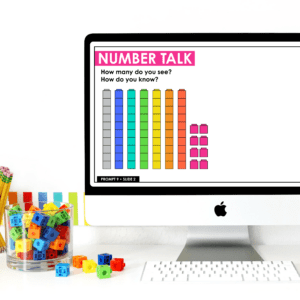
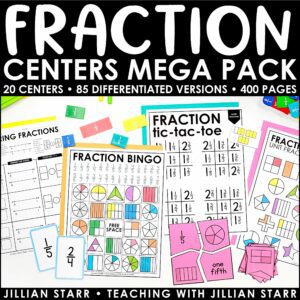
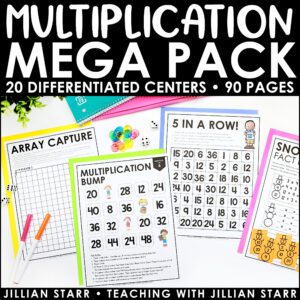
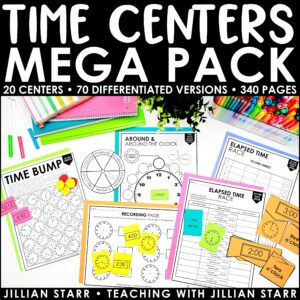
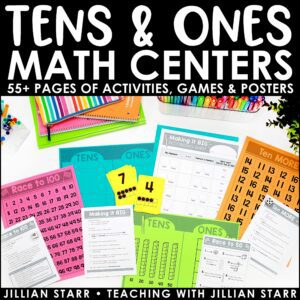





Is this applicable to high school students?
Hi Daisy!
I believe differentiating through small group work is possible in any grade, but it is certainly more difficult when you are trying to plan for 100+ students and 5+ classes!
This is intriguing… I had misconceptions about guided math. However, I’m wondering, do you still do the whole group curriculum based mini-lesson prior to the start of groups? I’m having trouble wrapping my head around how this works.
Hi Bianca! If it’s a mini-lesson that seems like it can be accessible to all of my students I could certainly use it during my whole group lesson (I teach a small whole-group lesson for about 10 minutes prior to small group instruction). However, since many of my curriculum mini-lessons don’t have multiple access points I usually use the mini-lessons in my small-group instruction and use Number Talks or investigations for whole-group lessons. I hope this helps!